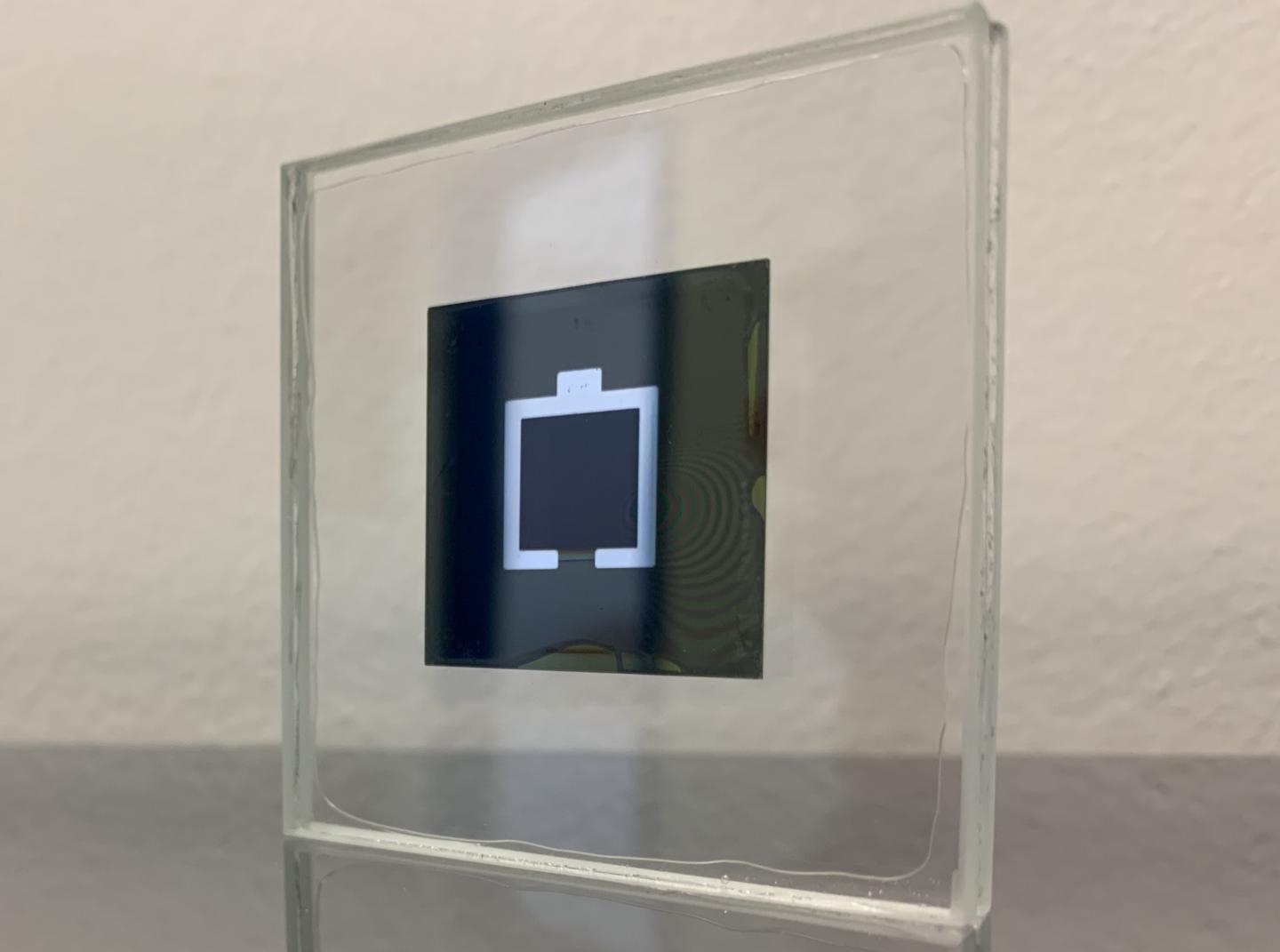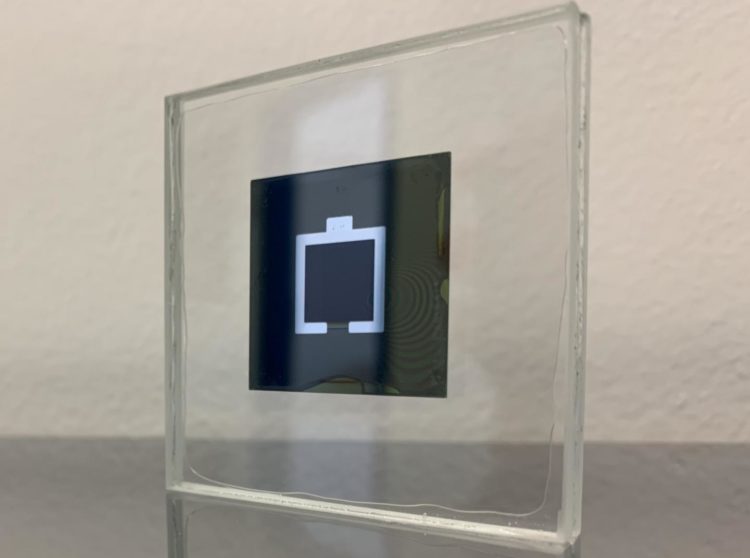29.15% efficiency is the new world record for a tandem solar element, developed by Lithuanian and German researchers; the material used to produce the record-breaking solar cell was developed at Kaunas University of Technology, Lithuania

Credit: © Eike Köhnen/HZB
29.15 per cent efficiency is the new world record for a tandem solar element. The record-breaking solar cell made of the semiconductors perovskite and silicon was developed by Lithuanian and German researchers. This value has been officially certified by the CalLab of the Fraunhofer Institute for Solar Energy Systems; the material used to produce the record-breaking solar cell was developed at Kaunas University of Technology, Lithuania.
Material, synthesised by Kaunas University of Technology (KTU), Lithuania scientists, which self-assemble to form a molecular-thick electrode layer, presents a facile way of realising highly efficient tandem solar cells.
Developed monolayers can be called a perfect hole transporting material, as they are cheap, are formed by a scalable technique and are forming very good contact with perovskite material. The self-assembled monolayers (SAMs) are as thin as 1-2 nm, covering all the surface; the molecules are deposited on the surface by dipping it into a diluted solution. The molecules are based on carbazole head groups with phosphonic acid anchoring groups and can form SAMs on various oxides.
“Perovskite-based single-junction and tandem solar cells are the future of solar energy, as they are cheaper and potentially much more efficient. The limits of efficiency of currently commercially used silicon-based solar elements are saturating. Moreover, existing production capacities of silicon solar cells can be used”, says Professor Vytautas Getautis, the head of the KTU research group behind the invention.
By integrating a SAM-based perovskite solar cell into a tandem architecture, the cell, which converts 29.15 per cent of the incident light into electrical energy was produced. This means that the 30 per cent efficiency mark is now within reach.
Using traditional technologies, 1 g of silicon (Si) is enough to produce only a couple of square centimetres of the solar element; however, 1 g of the material synthesised at KTU is enough to cover up to 1000 m2 of the surface. In addition, the self-assembling organic material synthesised at KTU is significantly cheaper than the alternatives used in photovoltaic elements currently.
The team of KTU chemists has been studying the use of the self-assembling molecules in solar cells for a couple of years. The material, synthesised at KTU, was applied in the production of a functioning solar cell in collaboration with Helmholtz Zentrum Berlin (HZB), Germany and Centre for Physical Sciences and Technology (Lithuania) physicists.
“The licence to produce the material synthesised at KTU laboratories was purchased by a Japanese company Tokyo Chemical Industry Co., LTD; one more Japanese company has shown interest in the product. This is already the second invention by this KTU research group, which has been licensed successfully”, says KTU Intellectual Property Management Project Manager Greta Zekiene.
The material called 2PACz and MeO-2PACz will soon appear in the market. This means that innovative technology using self-assembling compounds can be further researched in the best laboratories of the world and eventually find its way into the industry.
###
Media Contact
Aldona Tuur
[email protected]
370-612-55857
Original Source
https:/





